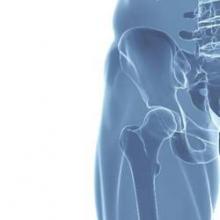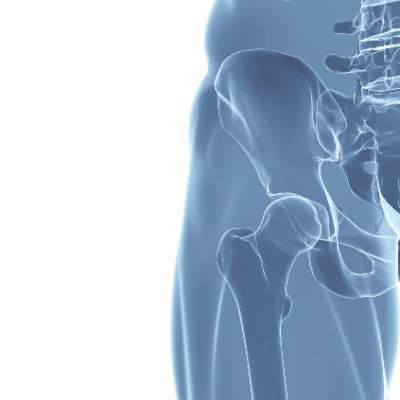User login
Blood-brain barrier permeability predicts MS in optic neuritis patients
Permeability of the blood-brain barrier may provide prognostic information for later multiple sclerosis in patients with optic neuritis, according to Dr. Stig P. Cramer of Rigshospitalet in Glostrup, Denmark.
In a study of 39 patients with monosymptomatic optic neuritis and 18 controls, investigators used dynamic contrast-enhanced MRI to measure blood-brain barrier permeability. MRI and lumbar puncture were performed within 4 weeks of onset, and information on multiple sclerosis (MS) conversion was acquired from hospital records 2 years later.
A multivariate logistic regression analysis found that baseline white matter permeability significantly improved prediction of MS, compared with T2 lesion count alone (P = .007). A receiver operating characteristic curve analysis of permeability in normal-appearing white matter gave a cut-off of 0.13 mL/100 g per min, which predicted conversion to MS with a sensitivity of 88% and specificity of 72%, the authors reported (Brain 2015:138;2571-83).
The findings suggest that “a new marker of low-grade multiple sclerosis disease activity could have many useful applications, i.e. subclinical disease activity monitoring or identification of inadequate treatment response before the next relapse occurs,” Dr. Cramer and his colleagues wrote.
“Quantification of [blood-brain barrier] permeability may constitute an early prognostic factor in the pathogenesis of multiple sclerosis,” they added.
The Research Foundation of the Capital Region of Denmark, Foundation for Health Research, Biogen Idec, and the Danish Multiple Sclerosis Society funded the work.
Read the full report here.
Permeability of the blood-brain barrier may provide prognostic information for later multiple sclerosis in patients with optic neuritis, according to Dr. Stig P. Cramer of Rigshospitalet in Glostrup, Denmark.
In a study of 39 patients with monosymptomatic optic neuritis and 18 controls, investigators used dynamic contrast-enhanced MRI to measure blood-brain barrier permeability. MRI and lumbar puncture were performed within 4 weeks of onset, and information on multiple sclerosis (MS) conversion was acquired from hospital records 2 years later.
A multivariate logistic regression analysis found that baseline white matter permeability significantly improved prediction of MS, compared with T2 lesion count alone (P = .007). A receiver operating characteristic curve analysis of permeability in normal-appearing white matter gave a cut-off of 0.13 mL/100 g per min, which predicted conversion to MS with a sensitivity of 88% and specificity of 72%, the authors reported (Brain 2015:138;2571-83).
The findings suggest that “a new marker of low-grade multiple sclerosis disease activity could have many useful applications, i.e. subclinical disease activity monitoring or identification of inadequate treatment response before the next relapse occurs,” Dr. Cramer and his colleagues wrote.
“Quantification of [blood-brain barrier] permeability may constitute an early prognostic factor in the pathogenesis of multiple sclerosis,” they added.
The Research Foundation of the Capital Region of Denmark, Foundation for Health Research, Biogen Idec, and the Danish Multiple Sclerosis Society funded the work.
Read the full report here.
Permeability of the blood-brain barrier may provide prognostic information for later multiple sclerosis in patients with optic neuritis, according to Dr. Stig P. Cramer of Rigshospitalet in Glostrup, Denmark.
In a study of 39 patients with monosymptomatic optic neuritis and 18 controls, investigators used dynamic contrast-enhanced MRI to measure blood-brain barrier permeability. MRI and lumbar puncture were performed within 4 weeks of onset, and information on multiple sclerosis (MS) conversion was acquired from hospital records 2 years later.
A multivariate logistic regression analysis found that baseline white matter permeability significantly improved prediction of MS, compared with T2 lesion count alone (P = .007). A receiver operating characteristic curve analysis of permeability in normal-appearing white matter gave a cut-off of 0.13 mL/100 g per min, which predicted conversion to MS with a sensitivity of 88% and specificity of 72%, the authors reported (Brain 2015:138;2571-83).
The findings suggest that “a new marker of low-grade multiple sclerosis disease activity could have many useful applications, i.e. subclinical disease activity monitoring or identification of inadequate treatment response before the next relapse occurs,” Dr. Cramer and his colleagues wrote.
“Quantification of [blood-brain barrier] permeability may constitute an early prognostic factor in the pathogenesis of multiple sclerosis,” they added.
The Research Foundation of the Capital Region of Denmark, Foundation for Health Research, Biogen Idec, and the Danish Multiple Sclerosis Society funded the work.
Read the full report here.
FDA approves Synjardy for type 2 diabetes
The FDA has approved Synjardy (empagliflozin/metformin hydrochloride) to help control blood glucose in adults with type 2 diabetes, the drug’s manufacturers announced Aug. 27.
Synjardy, which contains the sodium-glucose cotransporter 2 (SGLT2) inhibitor empagliflozin, is indicated as an adjunct to diet and exercise in patients unable to achieve sufficient glycemic control on empagliflozin or metformin, or in patients already being treated with both drugs.
When combined, empagliflozin and metformin offer “complementary mechanisms of action” to help control blood glucose, according to a statement by the manufacturers, Boehringer Ingelheim Pharmaceuticals and Eli Lilly and Co.
“Empagliflozin ... removes excess glucose through the urine by blocking glucose reabsorption in the kidney,” the statement said. Metformin, frequently prescribed as a first-line treatment, lowers glucose production by the liver and its absorption in the intestine.
Synjardy contains a boxed warning for lactic acidosis and should not be used by adults with severe kidney problems or allergies to empagliflozin, metformin, or any other ingredients in the medication. It also should not be used to treat type 1 diabetes or diabetic ketoacidosis.
Common side effects from Synjardy include runny nose, sore throat, urinary tract infections, female genital infections, diarrhea, headache, nausea, and vomiting.
Visit the Boehringer Ingelheim website for full prescribing information. Adverse effects may be reported to the FDA at http://www.fda.gov/medwatch.com.
The FDA has approved Synjardy (empagliflozin/metformin hydrochloride) to help control blood glucose in adults with type 2 diabetes, the drug’s manufacturers announced Aug. 27.
Synjardy, which contains the sodium-glucose cotransporter 2 (SGLT2) inhibitor empagliflozin, is indicated as an adjunct to diet and exercise in patients unable to achieve sufficient glycemic control on empagliflozin or metformin, or in patients already being treated with both drugs.
When combined, empagliflozin and metformin offer “complementary mechanisms of action” to help control blood glucose, according to a statement by the manufacturers, Boehringer Ingelheim Pharmaceuticals and Eli Lilly and Co.
“Empagliflozin ... removes excess glucose through the urine by blocking glucose reabsorption in the kidney,” the statement said. Metformin, frequently prescribed as a first-line treatment, lowers glucose production by the liver and its absorption in the intestine.
Synjardy contains a boxed warning for lactic acidosis and should not be used by adults with severe kidney problems or allergies to empagliflozin, metformin, or any other ingredients in the medication. It also should not be used to treat type 1 diabetes or diabetic ketoacidosis.
Common side effects from Synjardy include runny nose, sore throat, urinary tract infections, female genital infections, diarrhea, headache, nausea, and vomiting.
Visit the Boehringer Ingelheim website for full prescribing information. Adverse effects may be reported to the FDA at http://www.fda.gov/medwatch.com.
The FDA has approved Synjardy (empagliflozin/metformin hydrochloride) to help control blood glucose in adults with type 2 diabetes, the drug’s manufacturers announced Aug. 27.
Synjardy, which contains the sodium-glucose cotransporter 2 (SGLT2) inhibitor empagliflozin, is indicated as an adjunct to diet and exercise in patients unable to achieve sufficient glycemic control on empagliflozin or metformin, or in patients already being treated with both drugs.
When combined, empagliflozin and metformin offer “complementary mechanisms of action” to help control blood glucose, according to a statement by the manufacturers, Boehringer Ingelheim Pharmaceuticals and Eli Lilly and Co.
“Empagliflozin ... removes excess glucose through the urine by blocking glucose reabsorption in the kidney,” the statement said. Metformin, frequently prescribed as a first-line treatment, lowers glucose production by the liver and its absorption in the intestine.
Synjardy contains a boxed warning for lactic acidosis and should not be used by adults with severe kidney problems or allergies to empagliflozin, metformin, or any other ingredients in the medication. It also should not be used to treat type 1 diabetes or diabetic ketoacidosis.
Common side effects from Synjardy include runny nose, sore throat, urinary tract infections, female genital infections, diarrhea, headache, nausea, and vomiting.
Visit the Boehringer Ingelheim website for full prescribing information. Adverse effects may be reported to the FDA at http://www.fda.gov/medwatch.com.
Short bursts of activity may improve metabolic function in children
Interrupting sedentary behavior with brief intervals of moderate exercise improved short-term metabolic function in nonoverweight children, reported Dr. Britni R. Belcher of the division of cancer control and population sciences at the National Cancer Institute in Bethesda, Md., and her coauthors.
In a randomized trial of 28 normal weight children aged 7-11 years, participants either sat continuously for 3 hours or were interrupted every 30 minutes for 3 minutes of moderate-intensity walking during the 3-hour sitting period. Children were given a buffet meal afterward.
Results showed that children who exercised had 32% lower insulin area under the curve (AUC) (P = .001), 17% lower C-peptide AUC (P = .001), and 7% lower glucose AUC (P = .018), compared with continuous sitting. Concentrations of insulin and free fatty acid also were significantly lower in the interrupted sitting condition, compared with the continuous sitting condition.
“If these effects can be demonstrated over longer time periods, the small increases in energy expenditure from interrupted sitting and improved metabolic responses may potentially lead to better energy balance and glucose homeostasis in healthy children,” Dr. Belcher and her colleagues said in the report.
Read the full article in the Journal of Clinical Endocrinology and Metabolism.
Interrupting sedentary behavior with brief intervals of moderate exercise improved short-term metabolic function in nonoverweight children, reported Dr. Britni R. Belcher of the division of cancer control and population sciences at the National Cancer Institute in Bethesda, Md., and her coauthors.
In a randomized trial of 28 normal weight children aged 7-11 years, participants either sat continuously for 3 hours or were interrupted every 30 minutes for 3 minutes of moderate-intensity walking during the 3-hour sitting period. Children were given a buffet meal afterward.
Results showed that children who exercised had 32% lower insulin area under the curve (AUC) (P = .001), 17% lower C-peptide AUC (P = .001), and 7% lower glucose AUC (P = .018), compared with continuous sitting. Concentrations of insulin and free fatty acid also were significantly lower in the interrupted sitting condition, compared with the continuous sitting condition.
“If these effects can be demonstrated over longer time periods, the small increases in energy expenditure from interrupted sitting and improved metabolic responses may potentially lead to better energy balance and glucose homeostasis in healthy children,” Dr. Belcher and her colleagues said in the report.
Read the full article in the Journal of Clinical Endocrinology and Metabolism.
Interrupting sedentary behavior with brief intervals of moderate exercise improved short-term metabolic function in nonoverweight children, reported Dr. Britni R. Belcher of the division of cancer control and population sciences at the National Cancer Institute in Bethesda, Md., and her coauthors.
In a randomized trial of 28 normal weight children aged 7-11 years, participants either sat continuously for 3 hours or were interrupted every 30 minutes for 3 minutes of moderate-intensity walking during the 3-hour sitting period. Children were given a buffet meal afterward.
Results showed that children who exercised had 32% lower insulin area under the curve (AUC) (P = .001), 17% lower C-peptide AUC (P = .001), and 7% lower glucose AUC (P = .018), compared with continuous sitting. Concentrations of insulin and free fatty acid also were significantly lower in the interrupted sitting condition, compared with the continuous sitting condition.
“If these effects can be demonstrated over longer time periods, the small increases in energy expenditure from interrupted sitting and improved metabolic responses may potentially lead to better energy balance and glucose homeostasis in healthy children,” Dr. Belcher and her colleagues said in the report.
Read the full article in the Journal of Clinical Endocrinology and Metabolism.
Decision aids benefit OA patients considering joint replacement
Osteoarthritis patients who received patient decision aids (PtDA) in addition to usual educational resources had shorter wait times and fewer surgeries, and were more likely to reach good decision quality about joint replacement surgery, although the overall effect was not statistically significant, reported Dawn Stacey, Ph.D., of the University of Ottawa (Ont.) and her coauthors.
In a randomized, controlled trial of 343 patients undergoing orthopedic screening for hip or knee replacement surgery at an academic hospital or a community hospital, being given a PtDA (intervention) was associated with reduced wait times, compared with controls who received usual care (hazard ratio = 1.25; 95% CI, 0.99–1.60; P = .0653). Mean age of the patients was 66 years; about half had high school education or less and half had household incomes at or below the median income ($58,000) for couples aged 65 or older in Canada.
Surgery rates were 73.2% in the intervention group, compared with 80.5% in controls (relative risk = 0.91; 95% CI, 0.81-1.03), the investigators found. Good decision quality was reached by 56.1% of intervention patients and 44.5% of controls (RR = 1.25; 95% CI, 1.00–1.56, P = .050). However, the overall effect was not significant, Dr. Stacey and coauthors reported.
Most patients in the study had more severe osteoarthritis and were appropriate for considering surgery, but the PtDA may have had “greater effect and discrimination” when it was given to patients with earlier stages of osteoarthritis and may have helped them to consider their nonsurgical options, the investigators wrote.
Read the full study in Osteoarthritis and Cartilage.
Osteoarthritis patients who received patient decision aids (PtDA) in addition to usual educational resources had shorter wait times and fewer surgeries, and were more likely to reach good decision quality about joint replacement surgery, although the overall effect was not statistically significant, reported Dawn Stacey, Ph.D., of the University of Ottawa (Ont.) and her coauthors.
In a randomized, controlled trial of 343 patients undergoing orthopedic screening for hip or knee replacement surgery at an academic hospital or a community hospital, being given a PtDA (intervention) was associated with reduced wait times, compared with controls who received usual care (hazard ratio = 1.25; 95% CI, 0.99–1.60; P = .0653). Mean age of the patients was 66 years; about half had high school education or less and half had household incomes at or below the median income ($58,000) for couples aged 65 or older in Canada.
Surgery rates were 73.2% in the intervention group, compared with 80.5% in controls (relative risk = 0.91; 95% CI, 0.81-1.03), the investigators found. Good decision quality was reached by 56.1% of intervention patients and 44.5% of controls (RR = 1.25; 95% CI, 1.00–1.56, P = .050). However, the overall effect was not significant, Dr. Stacey and coauthors reported.
Most patients in the study had more severe osteoarthritis and were appropriate for considering surgery, but the PtDA may have had “greater effect and discrimination” when it was given to patients with earlier stages of osteoarthritis and may have helped them to consider their nonsurgical options, the investigators wrote.
Read the full study in Osteoarthritis and Cartilage.
Osteoarthritis patients who received patient decision aids (PtDA) in addition to usual educational resources had shorter wait times and fewer surgeries, and were more likely to reach good decision quality about joint replacement surgery, although the overall effect was not statistically significant, reported Dawn Stacey, Ph.D., of the University of Ottawa (Ont.) and her coauthors.
In a randomized, controlled trial of 343 patients undergoing orthopedic screening for hip or knee replacement surgery at an academic hospital or a community hospital, being given a PtDA (intervention) was associated with reduced wait times, compared with controls who received usual care (hazard ratio = 1.25; 95% CI, 0.99–1.60; P = .0653). Mean age of the patients was 66 years; about half had high school education or less and half had household incomes at or below the median income ($58,000) for couples aged 65 or older in Canada.
Surgery rates were 73.2% in the intervention group, compared with 80.5% in controls (relative risk = 0.91; 95% CI, 0.81-1.03), the investigators found. Good decision quality was reached by 56.1% of intervention patients and 44.5% of controls (RR = 1.25; 95% CI, 1.00–1.56, P = .050). However, the overall effect was not significant, Dr. Stacey and coauthors reported.
Most patients in the study had more severe osteoarthritis and were appropriate for considering surgery, but the PtDA may have had “greater effect and discrimination” when it was given to patients with earlier stages of osteoarthritis and may have helped them to consider their nonsurgical options, the investigators wrote.
Read the full study in Osteoarthritis and Cartilage.
FDA expands Promacta approval to include pediatric patients
The Food and Drug Administration has extended its approval of Promacta (eltrombopag) to include pediatric patients with chronic immune thrombocytopenic purpura, the agency announced Aug. 24.
Approved in 2008 for adults with immune thrombocytopenic purpura (ITP), eltrombopag is now approved for the treatment of the rare blood disorder in patients aged 1 year and older. The drug may be used in children who have not responded to other ITP medications or spleen surgery, the FDA said in a statement.
Eltrombopag’s efficacy and safety in children aged 1-17 years was established in two placebo-controlled trials comprising 159 patients. Findings from the first trial found that over 7 weeks, 62% of patients given eltrombopag had improved platelet counts without rescue therapy between weeks 1 and 6, compared with 32% in the placebo group.
In the second trial, which lasted 13 weeks, 41% of patients taking eltrombopag experienced increased platelet counts for at least 6 out of 8 weeks between weeks 5 and 12, compared with 3% of patients in the placebo group, the FDA reported.
“In both trials, patients taking Promacta also had less need for other treatments to increase their platelet counts, such as corticosteroids or platelet transfusions,” the FDA said. “Among patients taking one or more ITP medications at the start of the trials, about half were able to reduce or discontinue their use of these medications, primarily corticosteroids.”
Eltrombopag may be taken once daily in tablet form, or as a powder mixed with liquid for children aged 1-5 years. It should be used only in ITP patients with an increased risk of bleeding.
The most common side effects in children were infections of the upper respiratory tract or nose and throat, diarrhea, abdominal pain, rash, and increase in liver enzymes.
Promacta is manufactured by Novartis in East Hanover, N.J.
The Food and Drug Administration has extended its approval of Promacta (eltrombopag) to include pediatric patients with chronic immune thrombocytopenic purpura, the agency announced Aug. 24.
Approved in 2008 for adults with immune thrombocytopenic purpura (ITP), eltrombopag is now approved for the treatment of the rare blood disorder in patients aged 1 year and older. The drug may be used in children who have not responded to other ITP medications or spleen surgery, the FDA said in a statement.
Eltrombopag’s efficacy and safety in children aged 1-17 years was established in two placebo-controlled trials comprising 159 patients. Findings from the first trial found that over 7 weeks, 62% of patients given eltrombopag had improved platelet counts without rescue therapy between weeks 1 and 6, compared with 32% in the placebo group.
In the second trial, which lasted 13 weeks, 41% of patients taking eltrombopag experienced increased platelet counts for at least 6 out of 8 weeks between weeks 5 and 12, compared with 3% of patients in the placebo group, the FDA reported.
“In both trials, patients taking Promacta also had less need for other treatments to increase their platelet counts, such as corticosteroids or platelet transfusions,” the FDA said. “Among patients taking one or more ITP medications at the start of the trials, about half were able to reduce or discontinue their use of these medications, primarily corticosteroids.”
Eltrombopag may be taken once daily in tablet form, or as a powder mixed with liquid for children aged 1-5 years. It should be used only in ITP patients with an increased risk of bleeding.
The most common side effects in children were infections of the upper respiratory tract or nose and throat, diarrhea, abdominal pain, rash, and increase in liver enzymes.
Promacta is manufactured by Novartis in East Hanover, N.J.
The Food and Drug Administration has extended its approval of Promacta (eltrombopag) to include pediatric patients with chronic immune thrombocytopenic purpura, the agency announced Aug. 24.
Approved in 2008 for adults with immune thrombocytopenic purpura (ITP), eltrombopag is now approved for the treatment of the rare blood disorder in patients aged 1 year and older. The drug may be used in children who have not responded to other ITP medications or spleen surgery, the FDA said in a statement.
Eltrombopag’s efficacy and safety in children aged 1-17 years was established in two placebo-controlled trials comprising 159 patients. Findings from the first trial found that over 7 weeks, 62% of patients given eltrombopag had improved platelet counts without rescue therapy between weeks 1 and 6, compared with 32% in the placebo group.
In the second trial, which lasted 13 weeks, 41% of patients taking eltrombopag experienced increased platelet counts for at least 6 out of 8 weeks between weeks 5 and 12, compared with 3% of patients in the placebo group, the FDA reported.
“In both trials, patients taking Promacta also had less need for other treatments to increase their platelet counts, such as corticosteroids or platelet transfusions,” the FDA said. “Among patients taking one or more ITP medications at the start of the trials, about half were able to reduce or discontinue their use of these medications, primarily corticosteroids.”
Eltrombopag may be taken once daily in tablet form, or as a powder mixed with liquid for children aged 1-5 years. It should be used only in ITP patients with an increased risk of bleeding.
The most common side effects in children were infections of the upper respiratory tract or nose and throat, diarrhea, abdominal pain, rash, and increase in liver enzymes.
Promacta is manufactured by Novartis in East Hanover, N.J.
Quadrivalent flu vaccine administration nearly equal to trivalent usage in 2013-2014 season
Administration of the quadrivalent influenza vaccine in U.S. children nearly matched that of the trivalent vaccine during the 2013-2014 flu season, Loren Rodgers, Ph.D., and his coauthors from the Center for Disease Control and Prevention’s Immunization Services Division reported in a letter to the editor to Vaccine.
An analysis of 1,976,443 immunization records in patients aged 6 months to 18 years showed that 49.8% of vaccinations administered were trivalent, compared with 46.6% for the quadrivalent type. Another 3.7% of vaccines were an unknown or other type of influenza vaccine .
The report’s findings establish “a baseline for measuring uptake of quadrivalent influenza vaccines,” the authors said. “Trivalent vaccines were administered slightly more frequently, although use of quadrivalent vaccines is expected to increase.”
Read the full report here: (Vaccine 2015 http://dx.doi.org/10.1016/j.vaccine.2015.08.018)
Administration of the quadrivalent influenza vaccine in U.S. children nearly matched that of the trivalent vaccine during the 2013-2014 flu season, Loren Rodgers, Ph.D., and his coauthors from the Center for Disease Control and Prevention’s Immunization Services Division reported in a letter to the editor to Vaccine.
An analysis of 1,976,443 immunization records in patients aged 6 months to 18 years showed that 49.8% of vaccinations administered were trivalent, compared with 46.6% for the quadrivalent type. Another 3.7% of vaccines were an unknown or other type of influenza vaccine .
The report’s findings establish “a baseline for measuring uptake of quadrivalent influenza vaccines,” the authors said. “Trivalent vaccines were administered slightly more frequently, although use of quadrivalent vaccines is expected to increase.”
Read the full report here: (Vaccine 2015 http://dx.doi.org/10.1016/j.vaccine.2015.08.018)
Administration of the quadrivalent influenza vaccine in U.S. children nearly matched that of the trivalent vaccine during the 2013-2014 flu season, Loren Rodgers, Ph.D., and his coauthors from the Center for Disease Control and Prevention’s Immunization Services Division reported in a letter to the editor to Vaccine.
An analysis of 1,976,443 immunization records in patients aged 6 months to 18 years showed that 49.8% of vaccinations administered were trivalent, compared with 46.6% for the quadrivalent type. Another 3.7% of vaccines were an unknown or other type of influenza vaccine .
The report’s findings establish “a baseline for measuring uptake of quadrivalent influenza vaccines,” the authors said. “Trivalent vaccines were administered slightly more frequently, although use of quadrivalent vaccines is expected to increase.”
Read the full report here: (Vaccine 2015 http://dx.doi.org/10.1016/j.vaccine.2015.08.018)
CDC: Chinese study highlights need for smoke-free policies
Strictly enforced tobacco control regulations are necessary to effectively protect the public from the dangers of secondhand smoke, and results from a recently published report in China show strong public support for such policies, the CDC reported in a statement Aug. 19.
Findings from the survey of 31,151 respondents from 14 cities in China showed that more than 90% supported smoking bans in health care facilities and indoor areas of schools and universities. Also, 88% supported prohibiting smoking in workplaces and 86% supported a smoking ban in taxis.
However, in areas with smoke-free policies in effect in health care facilities and schools, awareness of these policies was as low as 34% in some cities, the authors noted. Other areas in need of attention are cessation rates, which remain low, and the cost of tobacco, which is very low in China, they added.
“Through the synergy of effective law enforcement and public-education campaigns, the acceptance of smoking could be reduced and eventually reversed,” the authors said in the report. “Cities could help transform the social norms regarding smoking in the surrounding areas and eliminate smoking in public places.”
The study was funded by the Chinese Center for Disease Control and Prevention.
Read the full report here.
Strictly enforced tobacco control regulations are necessary to effectively protect the public from the dangers of secondhand smoke, and results from a recently published report in China show strong public support for such policies, the CDC reported in a statement Aug. 19.
Findings from the survey of 31,151 respondents from 14 cities in China showed that more than 90% supported smoking bans in health care facilities and indoor areas of schools and universities. Also, 88% supported prohibiting smoking in workplaces and 86% supported a smoking ban in taxis.
However, in areas with smoke-free policies in effect in health care facilities and schools, awareness of these policies was as low as 34% in some cities, the authors noted. Other areas in need of attention are cessation rates, which remain low, and the cost of tobacco, which is very low in China, they added.
“Through the synergy of effective law enforcement and public-education campaigns, the acceptance of smoking could be reduced and eventually reversed,” the authors said in the report. “Cities could help transform the social norms regarding smoking in the surrounding areas and eliminate smoking in public places.”
The study was funded by the Chinese Center for Disease Control and Prevention.
Read the full report here.
Strictly enforced tobacco control regulations are necessary to effectively protect the public from the dangers of secondhand smoke, and results from a recently published report in China show strong public support for such policies, the CDC reported in a statement Aug. 19.
Findings from the survey of 31,151 respondents from 14 cities in China showed that more than 90% supported smoking bans in health care facilities and indoor areas of schools and universities. Also, 88% supported prohibiting smoking in workplaces and 86% supported a smoking ban in taxis.
However, in areas with smoke-free policies in effect in health care facilities and schools, awareness of these policies was as low as 34% in some cities, the authors noted. Other areas in need of attention are cessation rates, which remain low, and the cost of tobacco, which is very low in China, they added.
“Through the synergy of effective law enforcement and public-education campaigns, the acceptance of smoking could be reduced and eventually reversed,” the authors said in the report. “Cities could help transform the social norms regarding smoking in the surrounding areas and eliminate smoking in public places.”
The study was funded by the Chinese Center for Disease Control and Prevention.
Read the full report here.
Depression stigma not significantly affected by Germanwings crash
Some stigmatizing attitudes about depression have increased since the 2015 Germanwings plane crash, but the overall increase in depression stigma was smaller than expected, according to researchers at University Medical Center Hamburg-Eppendorf (Germany).
The March 24, 2015, crash of a Germanwings plane with 150 people aboard has been deemed a deliberate act by the copilot, who reportedly suffered from severe depression. Before the crash, the researchers had conducted telephone surveys of adults in Munich (n = 650). Four weeks after the Germanwings crash, the researchers replicated the previous survey (n = 601).
Both surveys assessed four components of mental illness stigma: characteristics associated with depression, belief in a continuum of symptoms, emotional reactions to people with depression, and desire for social distance. After the interviews, 99% of the respondents said they had heard about the Germanwings crash, said Olaf von dem Knesebeck, Ph.D., and associates in the department of medical sociology at the medical center (J Affect Disord. 2015 Jul 31;186:261-5).
The findings suggest that some stigmatizing attitudes, such as stereotypical attributes and continuum beliefs, have increased since the event, but overall increase in depression stigma was not as pronounced as expected, wrote Dr. von dem Knesebeck and his associates. “Changes were not statistically significant in the majority of the analyzed items,” they wrote. “A single devastating event and related media coverage seem to have a limited impact on public stigmatizing attitudes.”
Read the study in the Journal of Affective Disorders here.
Some stigmatizing attitudes about depression have increased since the 2015 Germanwings plane crash, but the overall increase in depression stigma was smaller than expected, according to researchers at University Medical Center Hamburg-Eppendorf (Germany).
The March 24, 2015, crash of a Germanwings plane with 150 people aboard has been deemed a deliberate act by the copilot, who reportedly suffered from severe depression. Before the crash, the researchers had conducted telephone surveys of adults in Munich (n = 650). Four weeks after the Germanwings crash, the researchers replicated the previous survey (n = 601).
Both surveys assessed four components of mental illness stigma: characteristics associated with depression, belief in a continuum of symptoms, emotional reactions to people with depression, and desire for social distance. After the interviews, 99% of the respondents said they had heard about the Germanwings crash, said Olaf von dem Knesebeck, Ph.D., and associates in the department of medical sociology at the medical center (J Affect Disord. 2015 Jul 31;186:261-5).
The findings suggest that some stigmatizing attitudes, such as stereotypical attributes and continuum beliefs, have increased since the event, but overall increase in depression stigma was not as pronounced as expected, wrote Dr. von dem Knesebeck and his associates. “Changes were not statistically significant in the majority of the analyzed items,” they wrote. “A single devastating event and related media coverage seem to have a limited impact on public stigmatizing attitudes.”
Read the study in the Journal of Affective Disorders here.
Some stigmatizing attitudes about depression have increased since the 2015 Germanwings plane crash, but the overall increase in depression stigma was smaller than expected, according to researchers at University Medical Center Hamburg-Eppendorf (Germany).
The March 24, 2015, crash of a Germanwings plane with 150 people aboard has been deemed a deliberate act by the copilot, who reportedly suffered from severe depression. Before the crash, the researchers had conducted telephone surveys of adults in Munich (n = 650). Four weeks after the Germanwings crash, the researchers replicated the previous survey (n = 601).
Both surveys assessed four components of mental illness stigma: characteristics associated with depression, belief in a continuum of symptoms, emotional reactions to people with depression, and desire for social distance. After the interviews, 99% of the respondents said they had heard about the Germanwings crash, said Olaf von dem Knesebeck, Ph.D., and associates in the department of medical sociology at the medical center (J Affect Disord. 2015 Jul 31;186:261-5).
The findings suggest that some stigmatizing attitudes, such as stereotypical attributes and continuum beliefs, have increased since the event, but overall increase in depression stigma was not as pronounced as expected, wrote Dr. von dem Knesebeck and his associates. “Changes were not statistically significant in the majority of the analyzed items,” they wrote. “A single devastating event and related media coverage seem to have a limited impact on public stigmatizing attitudes.”
Read the study in the Journal of Affective Disorders here.
Childhood sleep disturbance linked to later psychosis
The presence of parasomnias such as nightmares, night terrors, and sleepwalking in childhood may be an early indicator of later psychotic experiences, report Dr. A. Thompson and coauthors in the division of mental health and well-being at the University of Warwick, Coventry, England.
In a study of 4,720 children in the United Kingdom, patients were evaluated via interview for sleep disturbances at age 12, and again for psychotic experiences at age 18. The presence of nightmares at age 12 was significantly associated with psychosis at age 18 (odds ratio = 1.62; 95% confidence interval, 1.19-2.20), the investigators reported.
Although nightmares and night terrors may have little significance for later psychopathology in many patients, parasomnias in those with additional risks such as a family psychiatric history or a past trauma may “have greater significance and may also highlight other unnoticed psychopathology or trauma,” Dr. Thompson and colleagues said in the report.
“Further work is needed to understand the mechanisms and interplay of risk factors, especially the role of trauma, in the relationship between these sleep disturbances and psychotic experiences,” the authors concluded.
The investigators reported no conflicts of interest.
Read the full study in the British Journal of Psychiatry.
The presence of parasomnias such as nightmares, night terrors, and sleepwalking in childhood may be an early indicator of later psychotic experiences, report Dr. A. Thompson and coauthors in the division of mental health and well-being at the University of Warwick, Coventry, England.
In a study of 4,720 children in the United Kingdom, patients were evaluated via interview for sleep disturbances at age 12, and again for psychotic experiences at age 18. The presence of nightmares at age 12 was significantly associated with psychosis at age 18 (odds ratio = 1.62; 95% confidence interval, 1.19-2.20), the investigators reported.
Although nightmares and night terrors may have little significance for later psychopathology in many patients, parasomnias in those with additional risks such as a family psychiatric history or a past trauma may “have greater significance and may also highlight other unnoticed psychopathology or trauma,” Dr. Thompson and colleagues said in the report.
“Further work is needed to understand the mechanisms and interplay of risk factors, especially the role of trauma, in the relationship between these sleep disturbances and psychotic experiences,” the authors concluded.
The investigators reported no conflicts of interest.
Read the full study in the British Journal of Psychiatry.
The presence of parasomnias such as nightmares, night terrors, and sleepwalking in childhood may be an early indicator of later psychotic experiences, report Dr. A. Thompson and coauthors in the division of mental health and well-being at the University of Warwick, Coventry, England.
In a study of 4,720 children in the United Kingdom, patients were evaluated via interview for sleep disturbances at age 12, and again for psychotic experiences at age 18. The presence of nightmares at age 12 was significantly associated with psychosis at age 18 (odds ratio = 1.62; 95% confidence interval, 1.19-2.20), the investigators reported.
Although nightmares and night terrors may have little significance for later psychopathology in many patients, parasomnias in those with additional risks such as a family psychiatric history or a past trauma may “have greater significance and may also highlight other unnoticed psychopathology or trauma,” Dr. Thompson and colleagues said in the report.
“Further work is needed to understand the mechanisms and interplay of risk factors, especially the role of trauma, in the relationship between these sleep disturbances and psychotic experiences,” the authors concluded.
The investigators reported no conflicts of interest.
Read the full study in the British Journal of Psychiatry.
Family history, life stressors predict age of bipolar onset
A family history of psychiatric disorders and negative life stressors are associated with earlier and later onset of bipolar disorder, respectively, according to Dr. C.S. Thesing of the department of old age psychiatry, VU University Medical Center, Amsterdam.
In a study of 78 patients aged 60 years or older, a family history of psychiatric disorders was significantly associated with early age of illness onset (P less than .01), while negative stressors were associated with a later age of onset (P less than .05). Childhood abuse was not associated with either age of onset or the presence or absence of a family history of psychiatric disorders, reported Dr. Thesing and coauthors.
“Further research should be aimed at exploring both the biological and environmental aspects of [bipolar disorder] together,” the researchers wrote. “Later age at onset was associated with negative stressors prior to the first episode, possibly requiring a clinical emphasis on preventing stressors and/or strengthening patients in their abilities to deal with stressors to prevent new affective episodes,” they concluded.
Read the full study in Journal of Affective Disorders.
A family history of psychiatric disorders and negative life stressors are associated with earlier and later onset of bipolar disorder, respectively, according to Dr. C.S. Thesing of the department of old age psychiatry, VU University Medical Center, Amsterdam.
In a study of 78 patients aged 60 years or older, a family history of psychiatric disorders was significantly associated with early age of illness onset (P less than .01), while negative stressors were associated with a later age of onset (P less than .05). Childhood abuse was not associated with either age of onset or the presence or absence of a family history of psychiatric disorders, reported Dr. Thesing and coauthors.
“Further research should be aimed at exploring both the biological and environmental aspects of [bipolar disorder] together,” the researchers wrote. “Later age at onset was associated with negative stressors prior to the first episode, possibly requiring a clinical emphasis on preventing stressors and/or strengthening patients in their abilities to deal with stressors to prevent new affective episodes,” they concluded.
Read the full study in Journal of Affective Disorders.
A family history of psychiatric disorders and negative life stressors are associated with earlier and later onset of bipolar disorder, respectively, according to Dr. C.S. Thesing of the department of old age psychiatry, VU University Medical Center, Amsterdam.
In a study of 78 patients aged 60 years or older, a family history of psychiatric disorders was significantly associated with early age of illness onset (P less than .01), while negative stressors were associated with a later age of onset (P less than .05). Childhood abuse was not associated with either age of onset or the presence or absence of a family history of psychiatric disorders, reported Dr. Thesing and coauthors.
“Further research should be aimed at exploring both the biological and environmental aspects of [bipolar disorder] together,” the researchers wrote. “Later age at onset was associated with negative stressors prior to the first episode, possibly requiring a clinical emphasis on preventing stressors and/or strengthening patients in their abilities to deal with stressors to prevent new affective episodes,” they concluded.
Read the full study in Journal of Affective Disorders.






